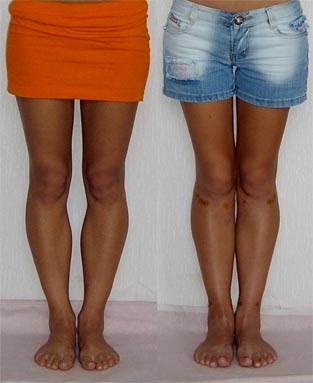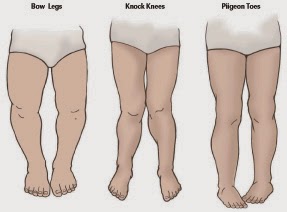
One cool thing about having your own publication is that you can write about anything you wish. Bidets happen to be one of those things that have been on my mind for quite some time. So here it goes.
From six to ten years old, we used to go on holidays with the whole family to the South of France. One thing I remember from those summer months by the beach is that the apartments we rented had no bidets. For a kid who doesn’t know anything but cleaning his popo using a bidet, this was confusing.
Bidets are known to be common in certain parts of Europe, South America, the Middle East, and East Asia. It is estimated that about 80% of bathrooms there have some kind of bidet.They are mainly to clean your behind with — and genitalia for females.
The models we had back then in Egypt were the oval porcelain basins that are separate from the toilet, usually located beside it, sometimes in front. In the second or third smaller bathroom of the household, or in some of the public ones, we could find a hose with a nozzle or a handgun that is attached to the wall next to the toilet.
 |
In this model (left) the water comes out upwards front the front. In others, the spout is at
the back while water comes out with a certain angle. On the right, is "the hose".
|
Before that, as I have seen in my 130-year-old school and other rural areas around Egypt, the common public bathroom/washroom/restroom/toilet/lavatory/W.C (Water Closet) had the squat toilet — also known as the Indian toilet or Turkish toilet.
My mother remembers when she was 4 years old in the mid 50s and living in Sudan where my grandfather was the Egyptian consul.
“The toilet was in a room by itself outside of the house, like a shed. There was a wooden seat with a bucket underneath, and a small door behind that allows the changing of the bucket twice a day.”
For the poor kid, the black hands reaching underneath as she poopied was one of her nightmares. And just like my own confusion without bidet, facing something that is outside of her norm also made her uncomfortable.
This was not the case when my grandfather became an Ambassador and they later moved to Lebanon, Morocco and Senegal, where they had actual bathrooms with real toilet.
 |
| The Squat Toilet was common back then |
Like many who got used to it, as I grew and started travelling to different countries, I still couldn’t understand how can all these great civilisations miss something so convenient, soothing, and hygienic as a bidet. I recall my dad and I joking that the fancy Sheraton Park Tower in London (now The Park Tower Knightsbridge) with all its might and glory had none.
Historically speaking, the bidet originated in France in the early 1700s. At that time, it was basically a bowl full of water, from which you could splash some using your hand. It was invented so people wash their privates without having to take a full bath. The word ‘bidet’, in fact, meant small horse or pony, coming from ‘bider’, meaning to trot.
The modern basin bidet
that is shaped like a toilet was developed in the 19th century. And the popular bidet seat came about in the 1960s, with one of the most trendy
invented by, believe it or not, an American by the name of Arnold Cohen.
“Mr. Bidet,” as he was known, stated that when he began to market his model in the U.S, 99 percent of Americans had never heard of or seen a bidet, which made them hard to sell.
In the 1980s, the modern seat was improved with the creation of the hybrid toilet-bidet appliance, sometimes called a ‘washlet’. A company, Toto Ltd, repackaged Cohen’s concept and took Japan by storm. Using remote-controlled wands that spout water jets and
finish with a warm-air dryer, the enhanced invention soon became highly popular in other areas around the world.
When we finally left the luxury life of the hotels we lived in — and their bathrooms — and I moved to my old apartment in Cairo, I had to remodel the 40-year-old 1960s bathroom. I remember buying the newer washlet. This was not electronic and had no buttons or air-dryer, but it was a simple one with a handle to adjust the water pressure.
As with the older models, we usually use toilet paper to dry; though others, often women, could use a wash cloth. Unlike the older models, with the washlets we don’t have to jump from the toilet to the bidet with pants down our legs.
I also remember how my father was reluctant when I was redesigning the bathroom, as for him the old-school separate bidet was how you really ‘cleanse’ yourself.
“It’s very important...for women as well,” he said.
Having been a ladies’ man in his youth, I took his words seriously. Though I explained that this new two-in-one model does the same thing and it’s even more hygienic...as there is a flush. The water spray automatically cleanses the anal/urethral area.
Besides, other than its cleaning capabilities, the washlet can also work just like an enema. On the separate bidet, however, this cannot work as chunks usually get stuck in the sink. Ah, the stinking memories.
So, this two-in-one new toilet was really convenient. It was an essential part of my hygiene and I simply loved it. I would miss it so much when I travel, that reuniting was always a special joy.
Some years later, I met a cousin who was born and raised in Japan, and she told me that toilet technology there is quite advanced. Their electric appliances had buttons to control the water temperature, to heat the toilet seat, and to dry your behind with hot air. I remember being fascinated by this new information, even asking a few people who had travelled to Japan to share their own experiences with those joy rides.
Today, as I found out, the new high-tech Japanese models have developed even further to include checking your blood pressure, playing music such as running-water sounds, and opening and closing automatically so one does not have to touch anything. Just like a mini spa for that dear derrière.
In North America, the story of the bidet has not been as successful.
After moving to Toronto, an Egyptian friend there told me that they sell a plumbing fixture often called ‘douche,’ or more colloquially, the toilet seat; also nicknamed the Muslim Shower. Those seats have a few buttons, but not as sophisticated as the wily Japs’. I loved the idea but I never got one since I didn’t sense I was going to settle there for long.
I recall having a related conversation with a Peruvian friend. She was telling us how an ex-boyfriend of hers, an Arab, used the bidet and how she always found it weird. She asked me, “why do they do that?” I remembered her unimpressed, borderline-disgusted face.
“Well, because it’s much cleaner,” was my most straightforward reply.
As for the longer reply, let us consider the following example, shall we.
When our hands, feet or face get dirty, we don’t just wipe them with dry paper towels, right? Because dry paper towels do not CLEAN stuff. And we don’t excrete poop from our hands, feet or face. Although when it does happen that the poop — ours or others’ — touches our skin, we freak out and run to wash them with... running water AND soap. See, without water, there will always be a smell, a “trace”; let alone the germs and bacteria. It’s actually pretty simple.
Having others not understand the cultural differences is something, but judging without knowing or examining is not the wisest thing to do.
A couple of more years into my journey, I left Canada to the US, and, again, I have no bidet or anything remotely close. I was reminded all over again by the topic when a friend posted the below video, which features people who had never used the bidet before and getting their reactions on camera. This is when I felt compelled to share a few things about something I sorely miss.
Now, let me share why a bidet — or a washlet, more conveniently — should be the norm and not the other way round.
First is pretty obvious: Cleanliness and hygiene.
Apart from the usual shower, nothing can beat having your asshole, and vagina, adequately washed with water once or more a day. This is even more the case for those who don’t always poop right before the shower, but hours apart.
The second advantage also involves cleanliness and hygiene, but not for you, for others.
If you are sexually active, and I don’t mean missionary-position active, but really playful in the bedroom, you would really appreciate having these parts of the body clean — theirs and yours.
Remember, the bidet cleanses the area where you excrete faeces. For women, it also cleanses their genitals; because they naturally emit certain odours due to the combination of fluid and bacteria that make up the vaginal discharge. This odour, and others, have a sincere potential of ruining the whole act. Well, for some of us at least.
With the bidet, one can enjoy the naughtiness without wondering what that weird, foul smell is. Also without finding a piece of toilet paper stuck to either of her holes. Yep, I said it. No wonder one wants to play with some more than others.
Speaking of which, the third advantage of the bidet has to do with less toilet paper and conservation. The water coming out from the washlet is more than enough to clean the bungholio, therefore the amount of toilet paper needed to dry is very little. Again, some use a small towel or cloth for drying.
Without the water, however, one is usually forced to use much more paper. Depending on your diet and how healthy you are will always affect the type/size/shape/colour of your anal output, which will consequently affect how smoothly — or not — it is cleaned. Bricks, ice cream, or mixed?
As reported by the Natural Resources Defense Council (NRDC), Americans use about 8 million tons of toilet paper every year — a staggering 36.5 billion rolls of toilet paper. Forests are constantly being destroyed to keep up with such high demand. So when you hop on that pony, not only do you save money by using less toilet paper, but you’re also helping the environment.
According to the Scientific American, switching to bathroom bidets could save some 15 million trees!
Finally, is how useful the bidet is for the elderly, the physically challenged and obese people, many of whom are found in North America. For those with Hemorrhoids, for example, running water may be more beneficial than toilet paper and wet pads (wipes).
 |
| And of course! |
That said, one may wonder why bidets didn’t really make it in the U.S.
Well, what I found is a series of fascinating theories.
One, the Brits had a certain level of disdain towards the French aristocrats, who were the first to use the bidets, so this sentiment may have drifted along as they crossed the pond.
Two is highly interesting. U.S soldiers during WW II likely
saw bidets in French brothels, and probably nowhere else, which later spread
the idea that they were ‘dirty’ and ‘immoral’ between the more conservative Americans.
This is a recent piece of mine about how soldiers from different countries frequented brothels to have sex during said war, The Comfort Women of the Imperial Japanese Army.
Three, the idea that bidets, the old traditional ones, required the use of hands to wash your genitals, which, again, for the conservative Americans may have seemed ‘wrong’. Therefore resorting to paper was their choice.
In fact, America were so conservative that the first toilet flushing wasn’t seen on film until the 1960 film Psycho.
I actually recall some American guy trying to make fun of an Arab by telling him that he washes his bum with his hand. So yes, this has probably stayed as a meme in the minds of many.
Fourth is the practicality. Most people who have spent their entire lives without using bidets see that their own method of cleaning is sanitary and that there is nothing wrong with their habits or their toilets. So the logic is why spend money and effort on something they don’t need.
Many American men are uncomfortable with the fact that the water penetrating them anally feels pretty darn good. Pffff 😀
 |
Instead of buying a whole new toilet/washlet for ($300 to $1000) one can
simply integrate the "douche" for about $45 [in the U.S] |
The interesting thing is that almost everyone who has spent the effort to write about bidets is in favour of the idea. Likewise, people who have actually gave it a chance really like it.
Most of those featured in the above video seemed pretty convinced. Quoting one of them:
“My butt feels really clean right now, I didn’t know it could be that clean.”
Well, now you know.
I asked an American friend in his 40s if he had ever tried a bidet. He
said he has, and he loved it. Though he inquired if they were
specifically designed for women. To which I said no and was about to
start ranting, but I stopped and said that I’ll send him the article
once done.
Who can blame them, really. You simply cannot NOT like having your genital and anal area cleansed with water instead of dry paper. Indeed, it is a highly pleasurable experience. But for most, until they try it, they will not really appreciate how hygienic and convenient the idea is.
In France, the birthplace of the bidet, the story is slightly different. Due to lack of space, lots of bathrooms got rid of the old separate bidet. However, unlike the Middle East, they did not exchange it with the newly-enhanced ‘Japanese’ washlet. Though it is still common to find bidets in older households.
In England, they were once popular in the 1970s when they were a sign of sophistication, but now you rarely find them. The washlet, however, may be on a slight rise due to their use by Middle Easterns.
In Italy on the other hand, 97 percent of bathrooms have bidets. In fact, there is a building law stating that every home must have one. They are also as popular in Portugal and Spain.
Indians have the Lota, which is a small, round container for water, typically of brass or copper. This is the original portable bidet.
In Canada, you don’t usually find bidets. But as I mentioned, the “Muslim Shower”, or the integrated one, is available in stores. I believe that might also be related to the high number of immigrants. The same could be said about Australia.
Interestingly, because bathroom issues are personal and private, when asked if they owned or used a bidet, some people get defensive. Others may get slightly nervous, even childishly calling it ‘gross!’ If one really understands how a bidet functions, I’m not really sure how it could be ‘gross’. I think that is just some sort of defence mechanism.
Today, the chances of the conventional bidet to thrive in the U.S or the U.K, or anywhere else for that matter, may be slim to none. For it needs space, expenses, and plumbing. Washlets, however, have a much better potential. They need some good marketing, as they
need that more people try them. Perhaps they could first be installed in
offices and restaurants. Simply because, as mentioned in the articles, people will not buy anything they haven’t tried...especially when it concerns a sensitive matter as personal hygiene.

















